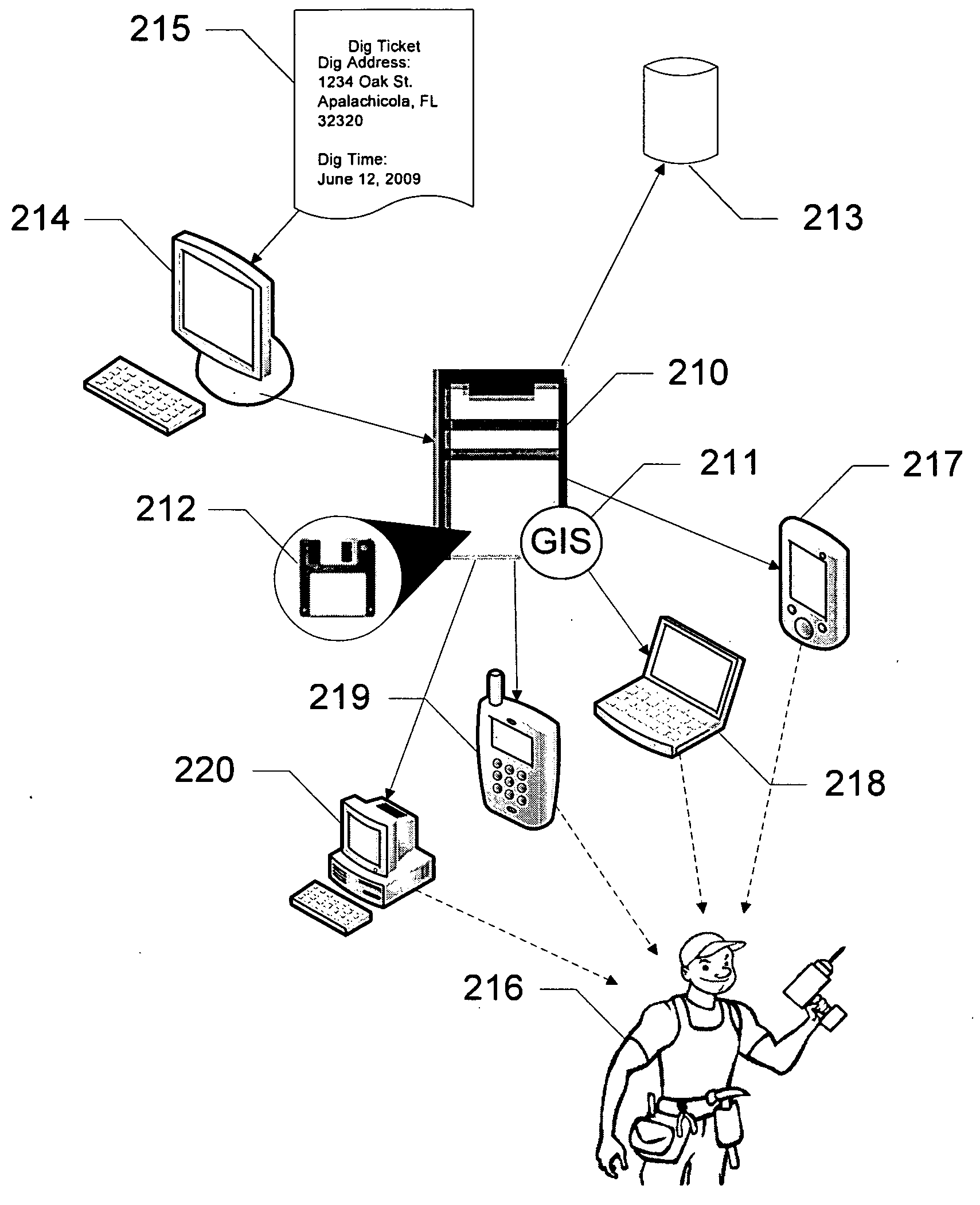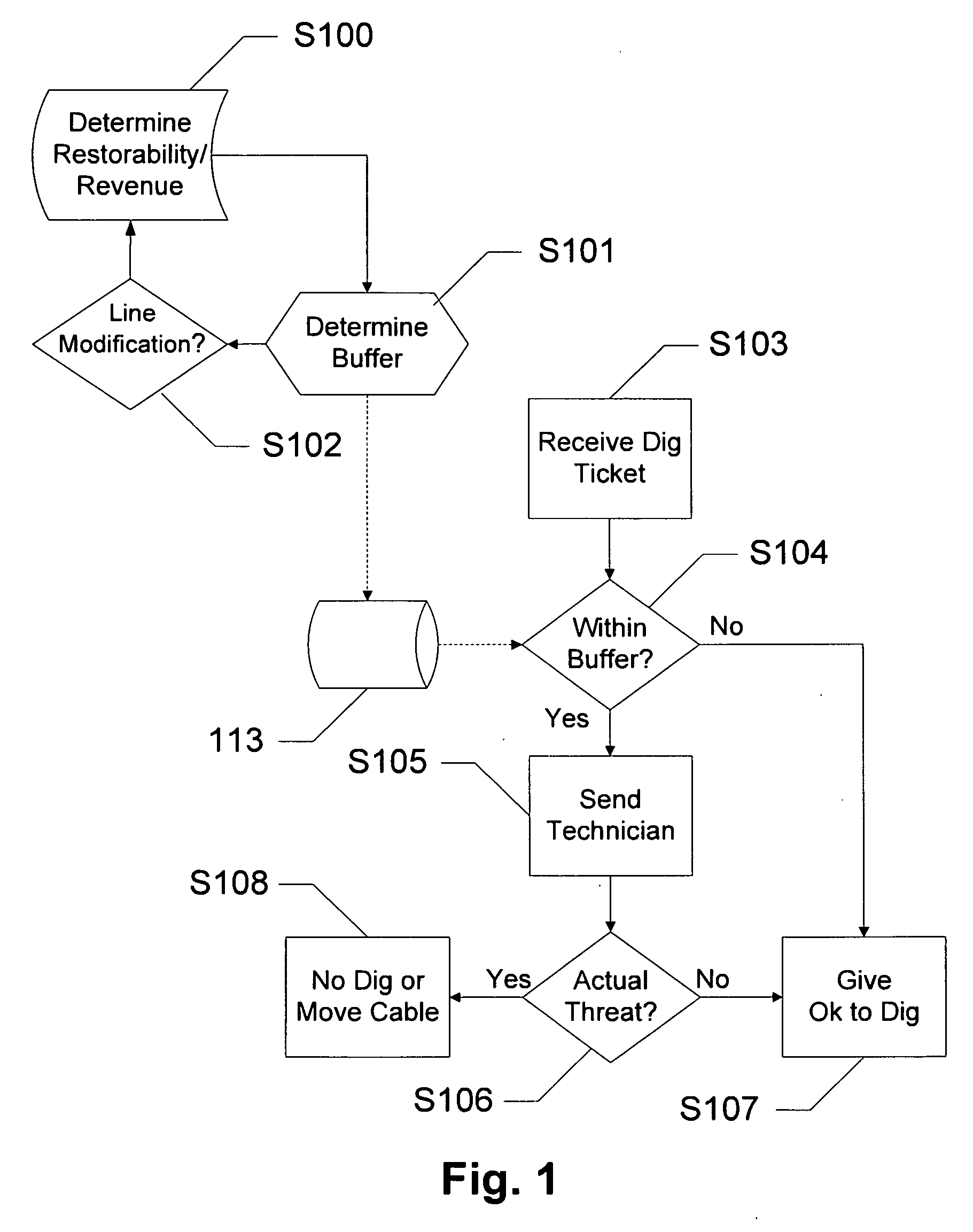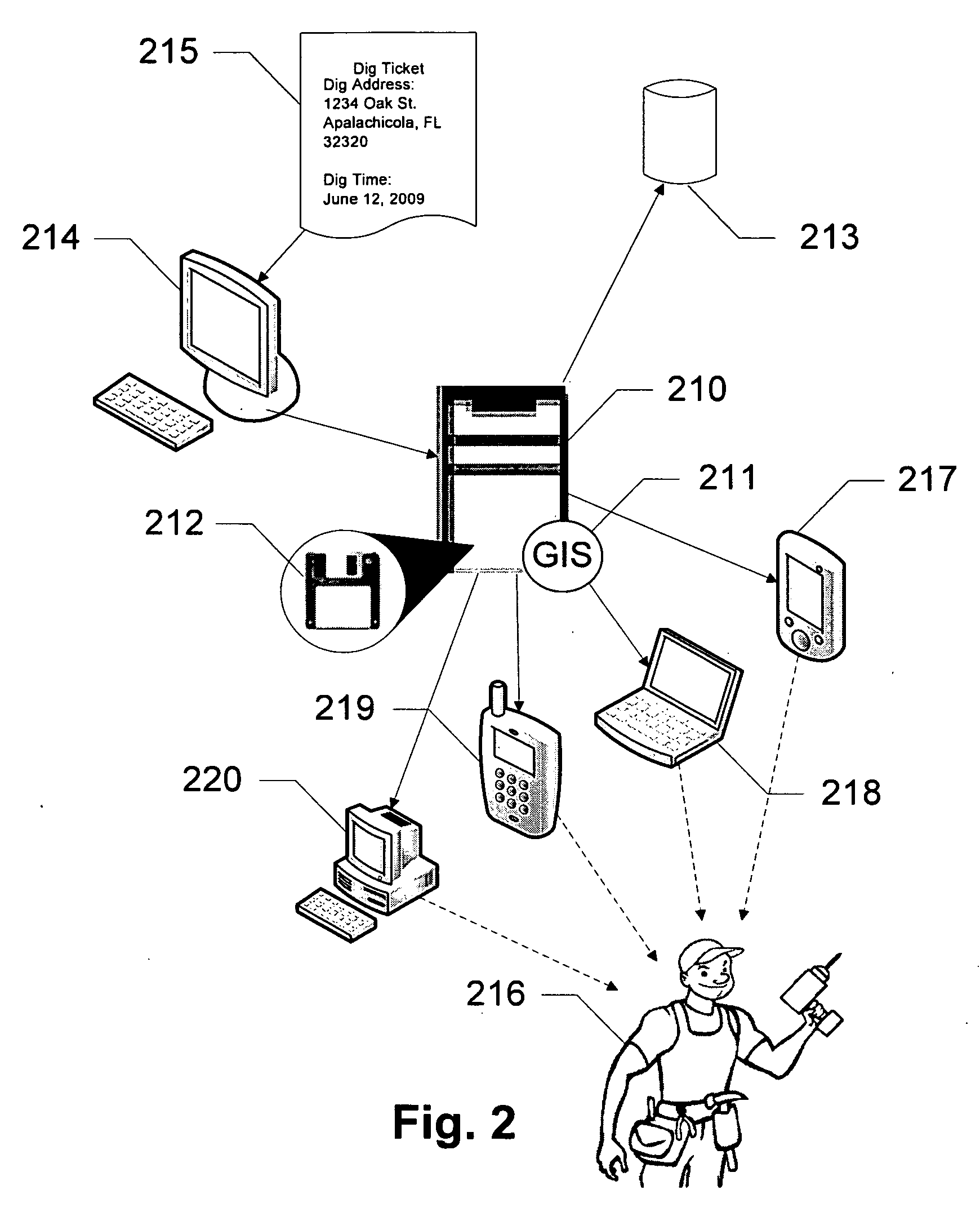Risk Management for Cable Protection Via Dynamic Buffering
a risk management and cable protection technology, applied in the direction of instruments, pulse techniques, navigation instruments, etc., can solve the problems of buried asset line damage risk and operating costs, inaccuracy in where the dig actually takes place, and hundreds of sources of error or inaccuracy in this process, so as to minimize the cost risk of an asset line carrying, minimize the risk of asset line damage and operating costs, the effect of minimizing the cos
- Summary
- Abstract
- Description
- Claims
- Application Information
AI Technical Summary
Benefits of technology
Problems solved by technology
Method used
Image
Examples
Embodiment Construction
[0022]The present invention optimizes a minimum cost function associated with buried asset lines by using a GIS application to generate a “dynamic buffer” around each asset line based on a risk management algorithm. A risk management algorithm, by which a GIS application can generate a “dynamic buffer”, is employed to minimize asset line damage risk and operating costs by balancing potential costs from damage against the fixed labor costs of manually screened and located tickets. Embodiments of the invention utilize the geography of the situation as well as factors for the asset itself.
[0023]“Asset line,” as used herein and throughout this disclosure, refers to a buried medium used in connection with a service. Examples of an asset line include an electrical line, water pipe, gas pipe, telephone cable, coaxial cable, fiber optic line, etc.
[0024]The risk management algorithm depends upon a GIS “auto-screening” application having access to certain cable logical parameters. The first o...
PUM
 Login to View More
Login to View More Abstract
Description
Claims
Application Information
 Login to View More
Login to View More - R&D
- Intellectual Property
- Life Sciences
- Materials
- Tech Scout
- Unparalleled Data Quality
- Higher Quality Content
- 60% Fewer Hallucinations
Browse by: Latest US Patents, China's latest patents, Technical Efficacy Thesaurus, Application Domain, Technology Topic, Popular Technical Reports.
© 2025 PatSnap. All rights reserved.Legal|Privacy policy|Modern Slavery Act Transparency Statement|Sitemap|About US| Contact US: help@patsnap.com



